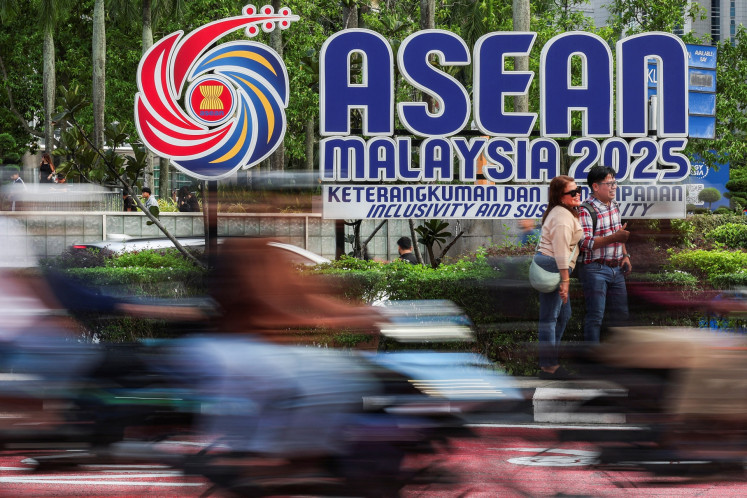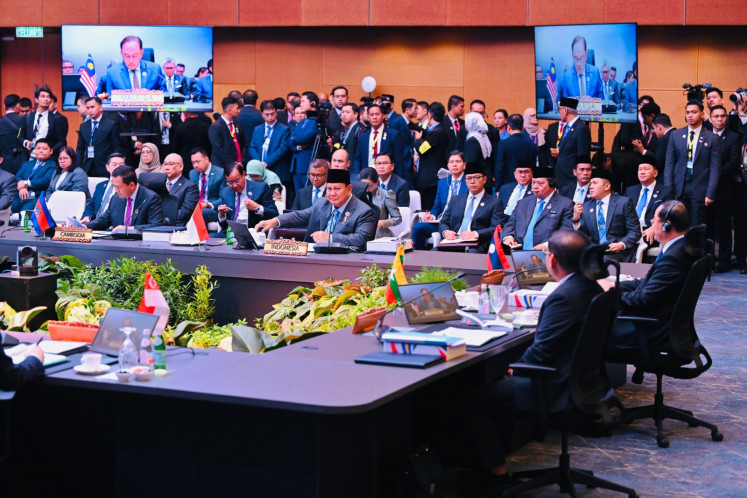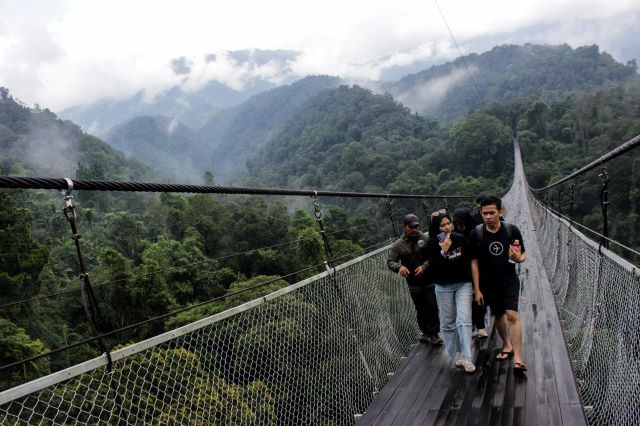Popular Reads
Top Results
Can't find what you're looking for?
View all search resultsPopular Reads
Top Results
Can't find what you're looking for?
View all search resultsInsight: Will US-Philippines pact sideline ASEAN's normative order?
The recent visit by US President Barack Obama to the Philippines ended in an agreement aimed at reinvigorating bilateral defense ties and cooperation between the two allies
Change text size
Gift Premium Articles
to Anyone
T
he recent visit by US President Barack Obama to the Philippines ended in an agreement aimed at reinvigorating bilateral defense ties and cooperation between the two allies. With the signing of the Enhanced Defense Cooperation Agreement (EDCA), the US military has greater access to Philippine bases for the next 10 years. The agreement will allow US troops and other military assets to be stationed in the Philippines on a temporary and rotational basis.
Even though Obama and US officials maintain that the EDCA is primarily meant to promote regional security and has nothing to do with China, one cannot miss the fact that the agreement clearly reinforces America's 'rebalancing' strategy in East Asia. Similar steps have been carried out by the US. During 2012-2013, it announced that it would deploy 2,500 marines to Australia; station four littoral combat ships (LCS) in Singapore; and deepen defense and security ties with Vietnam. The newest agreement with Manila will clearly boost America's defense posture and military presence in Southeast Asia.
Of course, through the EDCA, the US expects to alleviate doubts in the region, especially among its allies, about America's resolve and capacity to sustain its 'pivot to Asia' strategy. However, it is not difficult to see that the 'rebalancing' strategy is also meant to preserve American primacy in the face of China's rise and growing influence in the region.
For American allies and partners in the region, it is also the rise of China ' or the fear of it ' that has prompted them to convince Washington to stay engaged in the region to preserve the balance of power. Regional countries are nervous about China's growing assertiveness invoking its claims in the South China Sea.
Indeed, the strengthening of defense ties between the US and its allies and partners is taking place with the growing rivalry between the two great powers in the background. In this context, one wonders whether power politics has returned to Southeast Asia. In fact, many fear that the region is increasingly defined by the primacy of a realist order based on power politics and balance of power in classical sense.
These developments raise a critical question for the future of regional order in East Asia: Is ASEAN's approach, which prefers norms and institution-building as a mechanism to ensure regional peace and stability, being sidelined?
Of course, it is too early to say that ASEAN's approach has lost its relevance. From the outset, ASEAN realized that the region had always been characterized by the existence of three types of order that co-exist with each other. The first is the realist order based on the central role of power in inter-state relations. It would be naïve to believe that in an 'anarchical' world of international politics, the pursuit of power should be abandoned.
Second, states also believe that international relations are guided by certain norms. In fact, norms ' often demonstrated by states' adherence to international laws ' function to define the behavior of states. Even great powers like the US and China do see the need to abide by international norms. Hence, the existence of normative order in East Asia is a reality.
Third, interaction among states in East Asia has always been carried out within various institutions. This institution-based order in the region has been exemplified by the presence of various ASEAN-centered institutions such as the ASEAN Regional Forum (ARF), the ASEAN Plus Three (APT) and the East Asia Summit (EAS).
The challenge for ASEAN, therefore, is how to ensure that the realist order will not become a dominant feature of regional politics. ASEAN should ensure that the three types of order would reinforce, not undermine, each other. This is critical for peace and stability in the region. In order to do this, two prerequisites need to be fulfilled.
First, ASEAN and great powers need to recognize that the three types of order are interconnected. Normative and institution-based orders would not function properly without a stable balance of power among the great powers. However, a realist order based on balance of power will be fraught with risks of conflict if it is not moderated by a functioning normative and institution-based order. In the Southeast Asian context, therefore, it is in the interests of the great powers to support and strengthen ASEAN's normative and institution-based order.
Second, it is imperative for the region to find a way to alleviate the fear of China's rise. It is this fear that would push regional countries to adopt either 'bandwagoning' or 'balancing' strategies. Unfortunately, more and more countries in the region are choosing the strategy of balancing or hedging against China. China's growing assertiveness, especially in the South China Sea, is often cited as the key factor in this regard.
Therefore, the fear of China could be mitigated if the South China Sea problem can be managed peacefully through an early conclusion of the Code of Conduct (CoC) between China and ASEAN.
The writer is executive director of the Centre for Strategic and International Studies (CSIS), Jakarta.










